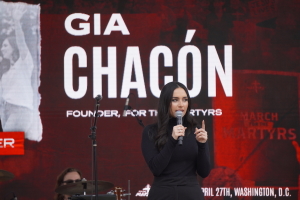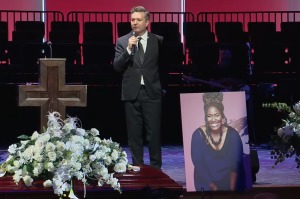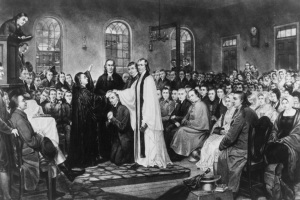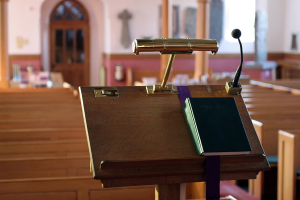Freeh Investigation Finds Penn State Officials 'Disregarded' Welfare of Sandusky's Victims
Read Remarks From Judge Louis Freeh on His Law Firm's Findings in Penn State Probe
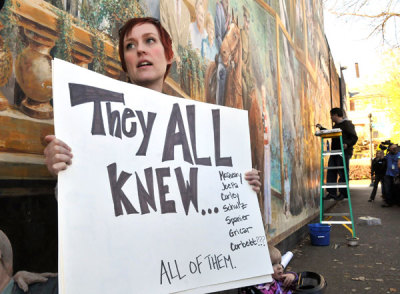
"Our most saddening and sobering finding is the total disregard for the safety and welfare of Sandusky's child victims by the most senior leaders at Penn State," Judge Louis Freeh and his law firm revealed Thursday morning, after months of investigating the school's involvement in the sex abuse case against former football coach Jerry Sandusky.
Freeh and his law firm, Freeh Sporkin & Sullivan, LLP, were retained in Nov. 2011 on behalf of the Special Investigations Task Force of the Board of Trustees of The Pennsylvania State University to conduct the independent investigation. They released a full report on the investigation online today, revealing their findings for the first time to the public.
Read remarks from Freeh, a former FBI director, on the investigation's findings on Penn State's involvement with Sandusky's crimes:
Findings
Our most saddening and sobering finding is the total disregard for the safety and welfare of Sandusky's child victims by the most senior leaders at Penn State. The most powerful men at Penn State failed to take any steps for 14 years to protect the children who Sandusky victimized. Messrs. Spanier, Schultz, Paterno and Curley never demonstrated, through actions or words, any concern for the safety and well-being of Sandusky's victims until after Sandusky's arrest.
In critical written correspondence that we uncovered on March 20th of this year, we see evidence of their proposed plan of action in February 2001 that included reporting allegations about Sandusky to the authorities. After Mr. Curley consulted with Mr. Paterno, however, they changed the plan and decided not to make a report to the authorities. Their failure to protect the February 9, 2001 child victim, or make attempts to identify him, created a dangerous situation for other unknown, unsuspecting young boys who were lured to the Penn State campus and football games by Sandusky and victimized repeatedly by him.
Further, they exposed this child to additional harm by alerting Sandusky, who was the only one who knew the child's identity, about what McQueary saw in the shower on the night of February 9, 2001.
The stated reasons by Messrs. Spanier, Schultz, Paterno and Curley for not taking action to identify the victim and for not reporting Sandusky to the police or Child Welfare are:
(1) Through counsel, Messrs. Curley and Schultz have stated that the "humane" thing to do in 2001 was to carefully and responsibly assess the best way to handle vague but troubling allegations.
(2) Mr. Paterno said that "I didn't know exactly how to handle it and I was afraid to do something that might jeopardize what the university procedure was. So I backed away and turned it over to some other people, people I thought would have a little more expertise than I did. It didn't work out that way."
(3) Mr. Spanier told the Special Investigative Counsel that he was never told by anyone that the February 2001 incident in the shower involved the sexual abuse of a child but only "horsing around." He further stated that he never asked what "horsing around" by Sandusky entailed.
Taking into account the available witness statements and evidence, it is more reasonable to conclude that, in order to avoid the consequences of bad publicity, the most powerful leaders at Penn State University – Messrs. Spanier, Schultz, Paterno and Curley – repeatedly concealed critical facts relating to Sandusky's child abuse from the authorities, the Board of Trustees, Penn State community, and the public at large.
Although concern to treat the child abuser humanely was expressly stated, no such sentiments were ever expressed by them for Sandusky's victims.
The evidence shows that these four men also knew about a 1998 criminal investigation of Sandusky relating to suspected sexual misconduct with a young boy in a Penn State football locker room shower. Again, they showed no concern about that victim. The evidence shows that Mr. Paterno was made aware of the 1998 investigation of Sandusky, followed it closely, but failed to take any action, even though Sandusky had been a key member of his coaching staff for almost 30 years, and had an office just steps away from Mr. Paterno's. At the very least, Mr. Paterno could have alerted the entire football staff, in order to prevent Sandusky from bringing another child into the Lasch Building. Messrs. Spanier, Schultz, Paterno and Curley also failed to alert the Board of Trustees about the 1998 investigation or take any further action against Mr. Sandusky. None of them even spoke to Sandusky about his conduct. In short, nothing was done and Sandusky was allowed to continue with impunity.
Based on the evidence, the only known, intervening factor between the decision made on February 25, 2001 by Messrs. Spanier, Curley and Schulz to report the incident to the Department of Public Welfare, and then agreeing not to do so on February 27th, was Mr. Paterno's February 26th conversation with Mr. Curley.
We never had the opportunity to talk with Mr. Paterno, but he did say what he told McQueary on February 10, 2011 when McQueary reported what he saw Sandusky doing in the shower the night before: "You did what you had to do. It is my job now to figure out what we want to do." Why would anyone have to figure out what had to be done in these circumstances? We also know that he delayed reporting Sandusky's sexual conduct because Mr. Paterno did not "want to interfere" with people's weekend.
To his credit, Mr. Paterno stated on November 9, 2011, "With the benefit of hindsight, I wish I had done more." Their callous and shocking disregard for child victims was underscored by the Grand Jury, which noted in its November 4, 2011 presentment that there was no "attempt to investigate, to identify Victim 2 or to protect that child or others from similar conduct, except as related to preventing its reoccurrence on University property."
None of these four men took any responsible action after February 2001 other than Mr. Curley informing the Second Mile that Mr. Sandusky had showered with a boy. Even though they all knew about the 1998 incident, the best they could muster to protect Sandusky's victims was to ask Sandusky not to bring his "guests" into the Penn State facilities.
Although we found no evidence that the Penn State Board of Trustees was aware of the allegations regarding Sandusky in 1998 and 2001, that does not shield the Board from criticism. In this matter, the Board – despite its duties of care and oversight of the University and its Officers – failed to create an environment which held the University's most senior leaders accountable to it. Mr. Spanier resisted the Board's attempt to have more transparency. In fact, around the time that Mr. Sandusky, Mr. Curley and Mr. Schultz were arrested, Mr. Spanier was unwilling to give the Board any more information about what was going on than what he was providing to the public.
After a media report on March 31, 2011, the Board was put on notice about serious allegations that Sandusky was sexually assaulting children on the Penn State campus. The Board failed in its duty to make reasonable inquiry into these serious matters and to demand action by the President.
















